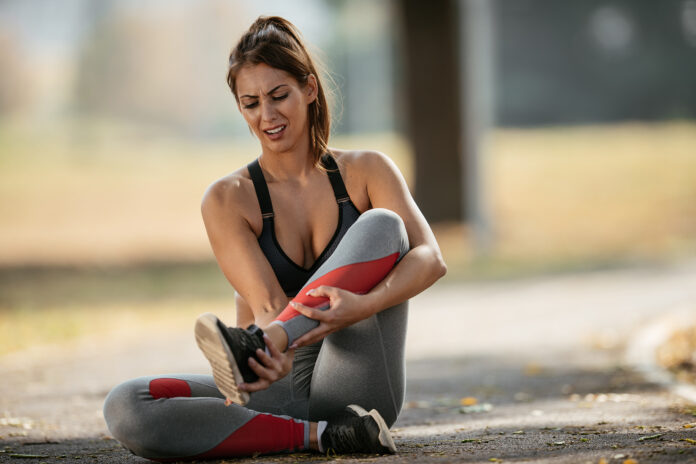
Have you ever been jerked awake from a deep slumber by an agonizing leg cramp? Or perhaps you’ve had to momentarily halt your downward dog because your leg muscles decided to put on an unexpected and painful performance. It’s an experience we could all do without. But what exactly causes these vexing muscle spasms? And how can we prevent them from gatecrashing our sleep or yoga classes? Let’s delve into the world of leg cramps and how to handle them.
The Intriguing Causes of Leg Cramps
Firstly, we need to tackle the common question – what triggers leg cramps? According to George E. Eldayrie, M.D., CAQSM, a primary care sports medicine expert, muscle fatigue and overuse often have a role to play, but the precise cause remains elusive. Theories abound, from dehydration to electrolyte imbalances, but there’s no consensus yet.
Muscular Fatigue and Overuse
Dr. John Gallucci Jr., a physical therapist and CEO of JAG-ONE Physical Therapy, explains that when a muscle is overworked, it places extra pressure on surrounding muscles. This pressure weakens those muscles, forcing other muscles to pick up the slack. The result? A muscle contraction, aka a cramp, that can last anywhere from a few seconds to a few agonizing minutes.
Electrolyte Imbalance
Athletes frequently experience cramps, especially in humid and high-temperature conditions. Eldayrie explains that this could be due to electrolyte imbalances or even a question of muscle endurance. If your body is running low on specific electrolytes, such as magnesium, cramps may become an unwelcome visitor. As Lauren Manaker, M.S., R.D.N., L.D., and advisor for Cure Hydration explains, magnesium plays a vital role in muscle contraction, making it a key player in our cramp drama.
Underlying Health Conditions and Medications
Certain medical conditions and medications can also trigger leg cramps. Diabetes, kidney failure, deep vein thrombosis, peripheral artery disease, and nerve compression conditions can all cause pain resembling a cramp. However, it could be something more severe, like a blood clot, causing discomfort. If you have one of these conditions and experience leg cramps, it’s vital to seek medical help.
Lack of Stretching, Prolonged Sitting, and Standing
Inadequate stretching and prolonged sitting or standing can also set the stage for cramps. Dr. Gallucci Jr. highlights that incorrect stretching can exacerbate pain and lead to more muscle spasms. Spending long hours sitting or standing can invite a myriad of health issues, including weight gain, obesity, high blood pressure, high blood sugar, and excessive body fat, all of which can make you more prone to leg cramps.
Cramp-Proofing Your Legs
Prevention, they say, is better than cure. In the case of leg cramps, pinpointing the underlying reason is the first step toward prevention. Eldayrie suggests maintaining a proper fitness level, adequate hydration, and electrolyte balance as keys to lowering the risk of leg cramps.
Start with a Stretch
Dr. Gallucci Jr. encourages starting every workout with 5 to 10 minutes of stretching. Not only does it improve muscle flexibility, but it also reduces the risk of injury and cramps by warming up and activating the muscles.
Power Up with Strength Training
Regular strength training can also keep cramps at bay. It helps define and build muscles while providing relief from cramps due to the release of endorphins in the body. It’s important to balance strength training with proper hydration and maintaining electrolyte levels.
Hydrate and Eat Electrolyte-Rich Foods
Consuming a balanced diet and staying hydrated can meet the body’s nutrient requirements and prevent muscle cramps. Manaker recommends adding electrolyte-rich foods, like watermelon, cucumber, and bananas, to your diet, especially if you’re prone to muscle cramps.
Consult a Healthcare Provider
However, if your leg cramps result from a medical condition, it’s best to seek advice from a healthcare provider.
Soothing Sudden Leg Cramps
When a cramp strikes, immediate relief is a priority. Stretching the affected muscle group can encourage the muscle fibers to release and relax, providing relief. Other methods that could work include massages, applying an ice pack, or using a heating pad. And if you’re feeling adventurous, a small sip of pickle juice or mustard could help, thanks to their salt content.
Dealing with Chronic or Recurrent Leg Cramps
If leg cramps are a regular feature in your life, determining the underlying cause is crucial. This could involve consulting a healthcare provider, supplementing your diet with specific electrolytes, or using compression socks for improved circulation.
Preventing Leg Cramps with a Healthy Lifestyle
To wrap up, maintaining a balanced lifestyle is key. Regular exercise, a balanced diet, and staying hydrated can all help in keeping leg cramps at bay. However, remember not to overuse your muscles. Finding the right balance between activity and rest is crucial.
So next time you feel the dreaded twinge of a cramp coming on, remember these tips. Pay attention to your body’s needs, give your muscles the rest they deserve, and ensure you’re staying hydrated. Here’s to cramp-free days and nights!










